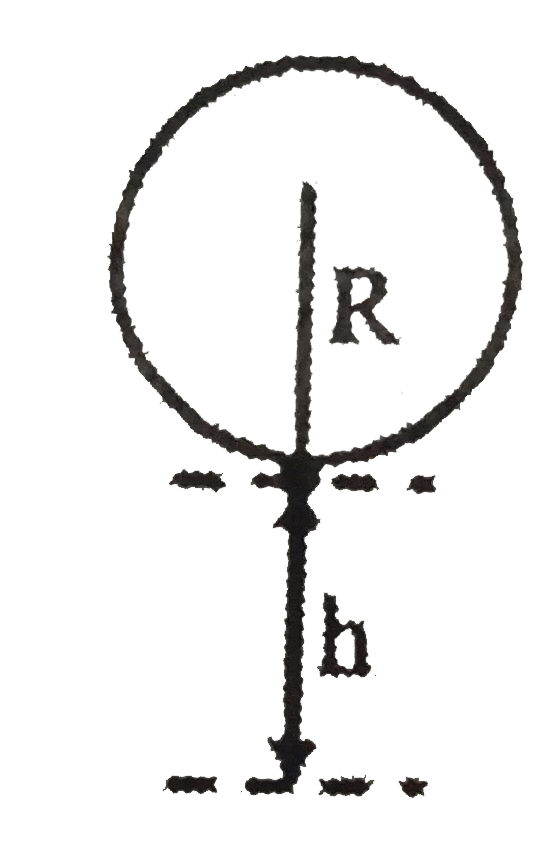A drop of water of mass m falls away from the bottom of charged conducting sphere of radius R, carrying with it a charge q1 and leaving the sphere a uniformly distributed charge q2. The kinetic energy of the drop after it has fallen height h is -
14πξ0q1q2(hR(R+h))
mgh
14πξ0q1q2(hR(R+h))+mgh
14πξ0q1q2h+mgh
The correct Answer is:C

Ui+Ki=Uf+Kf
Kq1q2R=−mgh+Kq1q2R+h+Kf
Kq1q2R−Kq1q2R+h+mgh=Kf
Topper's Solved these Questions
Similar Questions
A drop of water of mass 18×10−3 g falls away from the bottom of a charged conducting sphere of radius 20 cm, carrying with it a charge of 10−9C and leaving on the sphere a uniformly distributed charge of 2.5×10−6C. What is the speed of the drop after it has fallen 30 cm? (4πε0)−1=9×109JmC−2
View SolutionA conducting sphere of radius 2R carrying charge Q is joined to an uncharged conducting sphere of radius R. Find the charge flow through cinnecting wire.
View Solution
Knowledge Check
A conducting sphere of radius r has a charge . Then .
Athe charge is uniformly distributed over its surface if there is an external electric field .BDistribution of charge over its surface will be non uniform if no external electric field exist in space,CElectric field strength inside the sphere will be equal to zero only when no external electric field existsDPotential at every point of the sphere must be samePotential at a point x-distance from the centre inside the conducting sphere of radius R and charged with charge Q is
AKQRBKQxCQx2DxQCalculate amount of charge flow, when a conducting sphere of radius R and carrying a charge Q, is joined to an uncharged conducting sphere of radius 2R.
AQ4BQ3CQ2D2Q3
A non-conducting sphere of radius R is given a charge Q. Charge is uniformly distributed in its volume. The electric potential at centre and at the surface of sphere respectively are
View SolutionA non-conducting sphere of radius R is given a charge Q. Charge is uniformly distributed in its volume. The electric potential at centre and at the surface of sphere respectively are
View SolutionThe centre of neutral conducting sphere of radius "R" is at distance 'd' from a point charge "Q" .The potential of the sphere is
View SolutionA point charge q is placed at some distance d away from the centre of a grounded conducting sphere of radius r, as shown in the figure. The charge that flows the earth to the sphere is

View SolutionA conducting sphere of radius R and carrying a charge Q is joined to an uncharged conducting sphere of radius 2R. The charge flowing between them will be
View Solution
